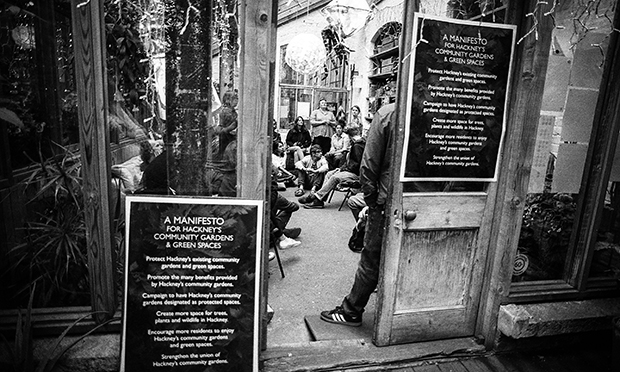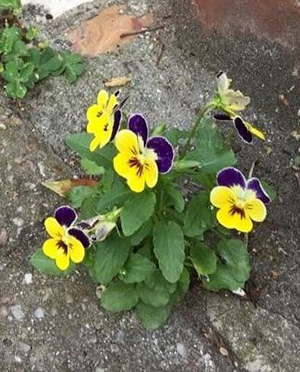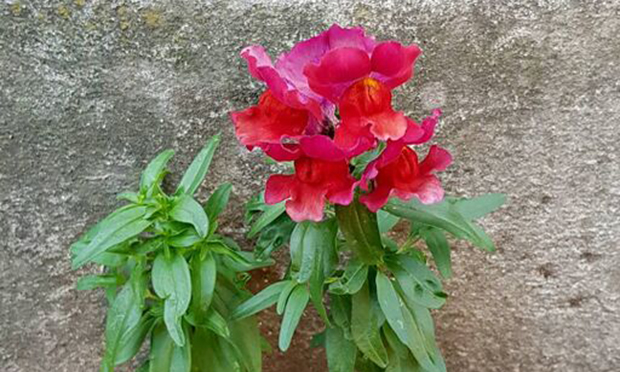The Citizen Gardener: ‘I’m steering clear of garden centre plants’

Where the wild things grow
I was tempted recently to buy an armful of flowering plants from a garden centre. They were labelled as ‘pollinator-friendly’ but I’ve since discovered that they might not be so good for insects.
Recent research by Prof. Dave Goulson and his team, related in his absorbing book The Garden Jungle or Gardening to Save the Planet (nhbs.com/the-garden-jungle-book), found that 76 percent of pollinator-friendly flowers they’d bought in garden centres contained traces of at least one pesticide.
The damage that pesticides do to insects is clear, of course, as they are designed to kill and no application has been invented that can distinguish a ‘good’ insect from a ‘bad’ one.
If they don’t kill the ‘pest’ they can affect their immune system and their ability to navigate and reproduce. Pesticides are persistent and can stay in the plant’s system for years.
So I’m steering clear of garden centre plants – no matter how pretty they look. And rather than rely on the label, next time I’m in a plant shop, Dr Goulson advises me to observe and see which plants are buzzing with insects the most and buy those.
This last paragraph might induce annoyance in many people because I’m clearly banging a particular drum. Someone had a go at me recently (and I paraphrase) for not being scientific enough in a time of fake news and that I should be more positive – about the good things pesticides and herbicides do.

I am not a scientist and I’m not sure it’s my place to try to be one – even if I had the time (or space to go into the evidence for and against pesticides). I am a champion of organic practices because over the decades of growing fruit and veg, experience and research has led me to believe that this is the best way to garden.
But I do realise that farmers growing food on a bigger scale have to deal with pest and weed infestations which damage crops and their livelihoods.
Ideally they use an Integrated Pest Management system – using a variety of means to control them (fao.org/agriculture/crops/thematic-sitemap/theme/pests/ipm/en/).
In Hackney there is seldom (if ever) a need to choose pesticides or herbicides over natural means of control. Plants have their own defence systems (thorns, poisons, tough leaves etc) and if they are constantly covered in pests, it may be because you have put the wrong plant in the wrong place which weakens it and makes it prone to infestation.
If you grow the right plant in the right conditions it will be healthy and use its own means to fend off disease and pests and, if you don’t use pesticides, predators will help by eating the invader.
Weed-killer, such as glyphosate, is used mostly for cosmetic reasons and perhaps if a ‘weed’ is taking up space and water you want for your preferred plant.
The really good news is that the council has stopped using weed-killer in a trial area of Hackney.
Several towns and cities around the world have banned herbicides with no ill effects. But what happens when you don’t spray and don’t want to be taken over by nettles and brambles?
There are alternatives to weed-killers, such as hand weeding (which is a very calming, mindful activity in my experience), sweeping, mulching or suffocating the weeds, boiling water, ‘hot foam’, vinegar and a changing aesthetic; that is, seeing weeds not as an ugly impediment but as an enhancement, or, as Ralph Waldo Emerson described them, “a plant whose virtues have not yet been discovered”.

Until everyone learns to love the virtues of wild plants, we will need to keep weeding but to stop ‘weeds’ coming back to the space you have just made, try sowing or planting something else – something suited to the space of course.
Herbs, like marjoram, thyme and mint do well in pavement margins.
In E5 we’ve seen all sorts of interesting plants appear. Gerry Tissier has been documenting those opportunists that have arrived since the spraying stopped in E5. Above are a selection.
On 20 October we’re having a mass weeding and bulb and seed sowing session in the streets around Daubeney Road. Meet at Linzell Gardens at 2pm.
United in enthusiasm
The Union of Hackney Gardens had its first meeting in September, bringing together an impressive range of expertise and enthusiasm. Tree, wildlife, food-growing, plant and community experts came together to form a combined force to support each other and make sure that the environment and community get higher up the political agenda – and to make a bit more noise about it. There will be free monthly training gatherings around the borough. If you are a gardening group, community garden, orchard, wildlife group or school, you can join the union via Capital Growth here or here if you are already a member.
Roll out the map
Great news from the council. They are appointing a biodiversity officer next year.
Last month, the Town Hall published some important changes to the latest draft of its Local Plan – which sets out policy on new developments in the borough until 2033.
The council has come up with a map of local open spaces. Its map includes allotments, community gardens, church yards and other green spaces and corridors along with Hackney’s parks and playing fields.
The council says it will not permit any of its ‘designated’ open spaces to be built on unless new open space of equal or better quality can be created next to it. It will also require that all new developments protect and, where possible, enhance Hackney’s biodiversity – leading to a net gain.
It’s great that the council is giving better protection to some of Hackney’s beautiful community gardens and green spaces and supporting biodiversity. But its new policy still does not go far enough.
It should now ask local communities to identify green spaces which are important to them and to our local wildlife. Then these loved green spaces can be put on the map too and protected from development.
Kate Poland is an award-winning community gardener. She was chosen to be the UK’s first ever postcode gardener in E5 as part of Friends of the Earth’s 10xGreener project. For more information, head to cordwainersgrow.org.uk and friendsoftheearth.uk
